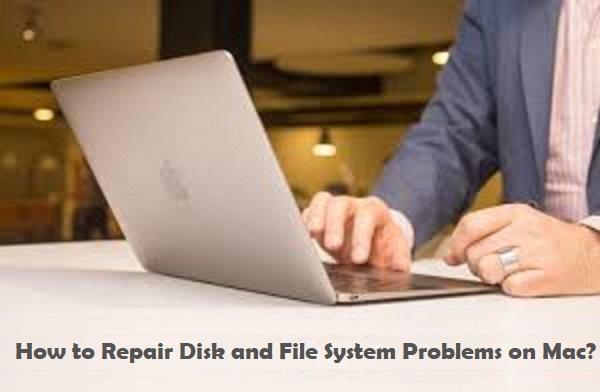You don’t have to bother about repairing disk permissions in the latest versions of Mac OS X. But, if you are running an earlier OS X on your Mac then, you should solve disk and file system problems on your own.
Definitely, this is not going to be a tougher job since, Mac OS X has a range of tools starting from First Aid to “fsck” for fixing the disk, partition, and file system issues.
So, in this editorial, I have explained how to repair disk and file system problems on your Mac in simple ways.
How to Repair Disk and File System Problems on Your Mac?
Launch Mac in Safe Mode
The simplest way to fix disk and file system errors on your Mac is to boot the machine in Safe Mode. Safe Mode/Safe Boot encloses an automatic startup check and repair mechanism. Thus, your several problems will get resolved when a Mac is booted in Safe Mode.
To boot your Mac into Safe Mode,
- Restart the Machine and hold the Shift key (during Mac boot)
- Sign in with the essential password and Mac starts to check the disks
- This login process takes more time compared to the normal boot action, so take a break
- If you are logged in and can see the desktop, then it says the check is done
- Now, you can reboot your Macintosh as usual
Try First Aid
Mac Disk Utility consists of a First Aid option. This First Aid performs a disk health check on your Mac system. Apple updated this feature (interface) in El Capitan yet its working mechanism remained the same.
So, how to use First Aid to repair disk and file system problems on Mac?
Step 1: Hit Command and Space keys together to open Spotlight.
Step 2: Type Disk Utility and click on Enter button.
Step 3: In the Disk Utility wizard, choose the disk or volume you want to check.
Step 4: Click on the First Aid button.
Step 5: Choose the Run option to check the selected disk for errors.
Step 6: If Disk Utility finds any error, it shows a list of found issues. You can use the Show Details option to view detailed information about the error that came up.
Step 7: Next, Disk Utility will ask your permission to automatically fix the found issues. Proceed and fix them.
If you see messages like “Storage system check exit code is 0” and “Filesystem check exit code is 0” then it indicates, no errors are found (code “0” is a good sign).
Try First Aid in Recovery Mode
In some cases, Mac fails to find and repair disk or file system issues when you boot it into Safe Mode. This is due to the “live mode”. The check runs in live mode and examines the disk meanwhile the OS X is running from it. Thus, the check cannot make changes to the system drive.
So, the solution now is to boot the Mac in Recovery Mode and then try First Aid, using Disk Utility in the same way as mentioned above.
To boot Mac in Recovery Mode,
- Hold Command and R keys while your Mac is booting
- Release the keys when you see a progress bar
- This loads your Mac directly in Recovery Mode
If you can’t reach Recovery Mode then, reboot the Mac again and repeat the same steps.
Once you entered into Recovery Mode, run Fist Aid using the second method.
Try fsck in Single-User Mode
You need to boot the Mac into single-user mode and try the fsck (file system check) command if First Aid in Recovery Mode (or any other technique) won’t help you to fix the problems.
To run the fsck command in Single-User Mode,
- Restart your Mac and press the Command + S (when it’s booting) buttons to reach Single-User Mode.
- Type /sbin/fsck –fy and hit Enter key to run a file system check
- Wait for some time
After the check, you will see either the “** The X (volume name) appears to be OK” or “***** FILE SYSTEM WAS MODIFIED *****” message.
- If you see the “FILE SYSTEM WAS MODIFIED” message then it indicates, fsck found and fixed problems
- Run fsck until you see “the volume appears to be OK” message twice
- Finally, type Reboot and press Enter
- The Mac reboots and gives you the typical login screen.
In case, if you fail to repair disk and file system problems on your Mac via any of the above techniques and the Mac machine is failing to function normally then it seems your disk is nearby to the deadline.
Therefore, hurry up. Backup entire data from your drive onto a safe external device. If you cannot back up your files, then try Yodot Mac Data Recovery. The tool can effortlessly restore files from MacBook Pro, MacBook Air, etc., and is 100% compatible with all versions of Mac OS X. Never lose your precious data due to any issue that made your Mac fail. You cannot recreate them, once they are gone!
